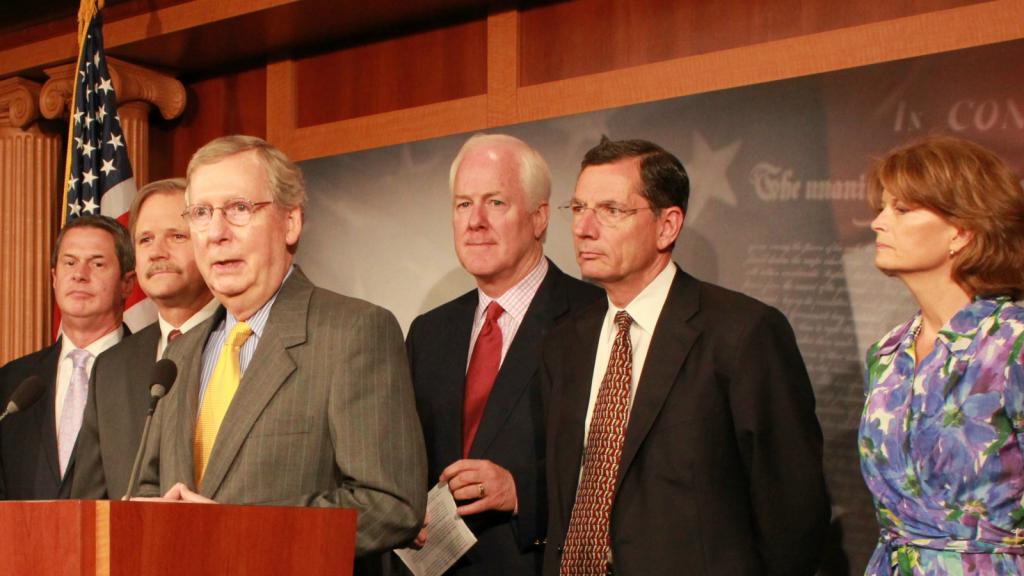Will China and India offer up ambitious climate action plans this year? The fate of the Earth might be determined by the answer. Unless those large and fast-growing economies curb their emissions, we can’t avert catastrophic climate change. Their willingness to make serious commitments will be necessary to build enough momentum for an international deal at the U.N. Climate Change Conference in Paris this December.
The success of Paris will not just be decided during the two-week negotiating marathon. Much of what happens there will be determined by what has happened up to that point. The central challenge is building mutual trust among nations that if they do their part everyone else will too. That trust can’t be built in two weeks. It takes years of showing good faith with actions as well as words.
That’s why President Obama has carefully crafted executive actions such as the Clean Power Plan to make sure the U.S. is on track to just barely meet its emissions-reduction pledge made at the last big U.N. climate meeting in Copenhagen in 2009. Any failure to do so would undermine our ability to negotiate a stronger agreement this time. Likewise, the joint announcement in November of climate and clean energy goals from the U.S. and China was meant to show other nations that the world’s two biggest emitters are serious.
But seriousness is in the eye of the beholder, and some say China hasn’t really committed to much. The U.N. asked countries to submit climate pledges by March 31, but China didn’t meet the deadline — and neither did India nor most other nations. Only 33 countries have released their climate action plans so far — and that includes all 27 members of the European Union who did so collectively. China, in its joint announcement with the U.S. last year, only promised to “make best efforts” to plateau or start reducing emissions before 2030, and to get “around” 20 percent of its electricity from renewables by that same year. We don’t know whether it will come up with a more ambitious proposal this year.
To make sure warming doesn’t exceed more than 2 degrees Celsius above pre-industrial levels, the world’s emissions must drop by around 80 percent from 1990 levels by 2050. How much each country has to cut its emissions by 2030 to be on the path of 80 percent cuts by 2050 is arguable, but actually increasing emissions by then — as China and India are poised to do — is not a convincing way to go about it.
The U.S. is one of the nations that did meet the U.N.’s March deadline — it submitted a plan to cut emissions 26 to 28 percent from 2005 levels by 2025. But that is insufficiently ambitious too. According to an analysis by Climate Action Tracker of what the U.S. must do if we are to stay below 2 degrees of warming, “The US has used its carbon budget already and has so much responsibility and capability that it should actually have zero emissions in 2025 (if necessary compensating its real emissions with allowances from elsewhere). With this perspective the US proposal for 2025 is well outside of what is considered fair.” The U.S. can’t realistically have zero emissions within 10 years, of course, but the idea would be for it to have zero net emissions through offsets such as investing in clean energy and reforestation abroad.
To understand the climate dilemma, it’s helpful to have a sense of how countries rank in terms of emissions. By single country, the top four emitters are China, the U.S., India, and Russia. The E.U., though, operates as one unit on climate policy; taken as a whole, it ranks third. But China and India have much larger populations than other nations, so per capita emissions need to be considered too. Among the 10 biggest overall emitters, the four biggest emitters per capita are, in order: Canada, the U.S., Russia, and Japan. China just passed the E.U. for fifth place last year. Moreover, rich developed countries have much higher cumulative emissions, because they enjoyed decades or even centuries of spewing carbon while building wealth. And much of China’s emissions actually come from making products consumed in wealthy nations. (Many helpful graphs on all this, via the World Resources Institute, can be viewed here.)
So, China and India argue that it isn’t fair to expect them to start cutting emissions right now, or even in the next few years. They are still much poorer than Western countries, and still have lower historical emissions. Asking them to make big cuts in the near future is basically asking them to clean up our mess. It’s an understandable perspective, but unfortunately physics does not make allowances for historical equity — total global emissions have to be slashed.
Nor does physics make allowances for the Republican Party’s obstructionism. Obama and his successor don’t have the legal authority to cut emissions much further than already planned. To be significantly more ambitious would require the passage of carbon-pricing legislation, and to spend money on subsidizing clean energy in the developing world would require appropriations from Congress. You might as well ask John Boehner and Mitch McConnell to raise taxes on the Koch brothers to pay for gay weddings.
The only Western nation to make a really fair commitment to emissions reductions is the E.U., which has pledged a 40 percent reduction from 1990 levels by 2030. Absent such strong commitments from everyone, it’s hard to get buy-in from anyone, since there isn’t much climate benefit to reducing your emissions unless everyone else does too. And so non-Western big climate polluters are following China’s lead and being coy.
India is sending mixed signals. On the one hand, Indian Prime Minister Narendra Modi acknowledges the importance of addressing climate change. India plans to increase its solar energy capacity to 100 gigawatts and its wind capacity to 60 gigawatts by 2022. But at the same time, it is doubling its coal production to over 1 billion tons per year, which could surpass even China’s. (This is despite the fact that India’s cities already suffer from some of the worst particulate pollution in the world.) And although India has a carbon tax, it’s low — especially for coal. President Obama reportedly hoped to make a joint announcement with Modi on climate when Obama visited India in January, but was unable to persuade Modi to do so. Modi contends that the U.S., given its greater wealth and much bigger historical emissions, should offer bigger cuts of its own before calling on India to get in the game.
Japan is also giving climate hawks reason to worry. Since the disastrous Fukushima nuclear plant meltdown, Japan has shuttered its nuclear plants and shifted back toward coal and natural gas. As a result, it is likely to have underwhelming climate action targets, although they have not been announced yet. The Japanese press reports that their government will unveil in June a target of a 20 percent reduction from either 2005 or 2013 levels by 2030. Climate Action Tracker writes, “If the Japanese government were to announce this target, it would rate as ‘inadequate’: if all countries adopted this level of ambition warming would likely exceed 3–4°C in the 21st century.”
Russia, meanwhile, doesn’t even bother with coyness because President Vladimir Putin does not understand climate science and loves to thumb his nose at Europe and the U.S. So, while Russia actually has submitted its plan of action for climate change, it involves doing nothing. The country pledges to reduce emissions 30 percent from 1990 levels, but it is already emitting even less than that. Indeed, if it counts the carbon sinks of its huge forests, as it proposes to, Russia could actually significantly increase emissions from current levels under this proposal. Climate Action Tracker, unsurprisingly, labels this “inadequate” as well.
Still, a lot can happen, so none of this should get climate hawks too discouraged. Russia’s targets are only preliminary, and it says it is open to different ones depending on what happens in Paris.
And some close observers of Indian politics say that Modi may surprise people by turning out to be a climate hawk. He ended gasoline subsidies last year. As chief minister of the state of Gujarat he expanded solar power, and he’s now pushing to do the same nationally. Modi wants to triple India’s nuclear power generation capacity. And the particulate pollution in Delhi and other cities is so bad that public pressure might force him to move away from coal. Essentially, for India it all comes down to whether rich nations will help it bring clean electricity to the 400 million Indians who currently lack electricity altogether. The Washington Post reports that India will actually lay out two possible climate scenarios: one on what it can do alone, and another that “would be a more ambitious plan outlining moves that could be made with international financial support, technology exchanges and incentives.” If rich countries have the will, there is a way.



